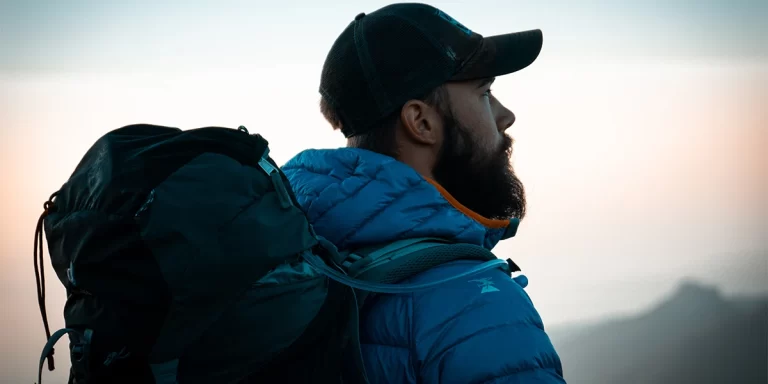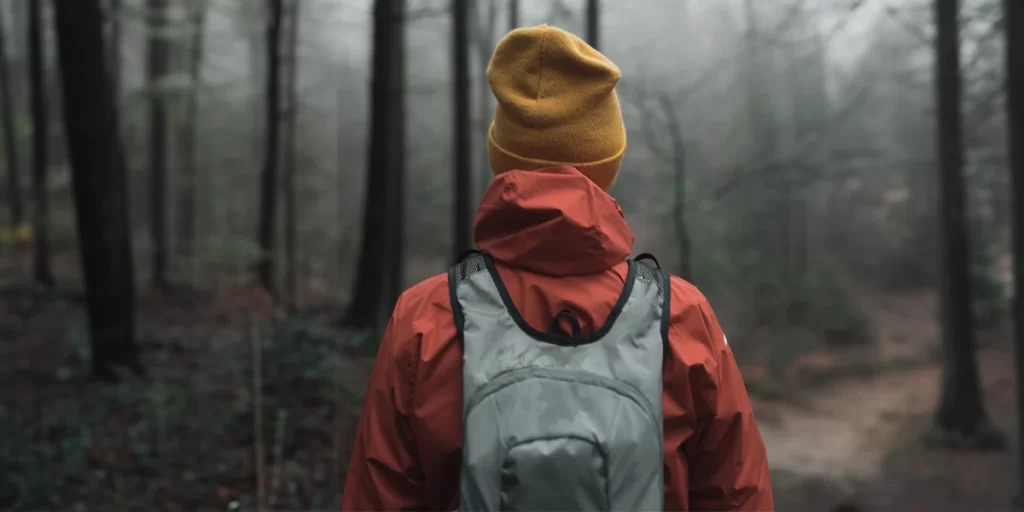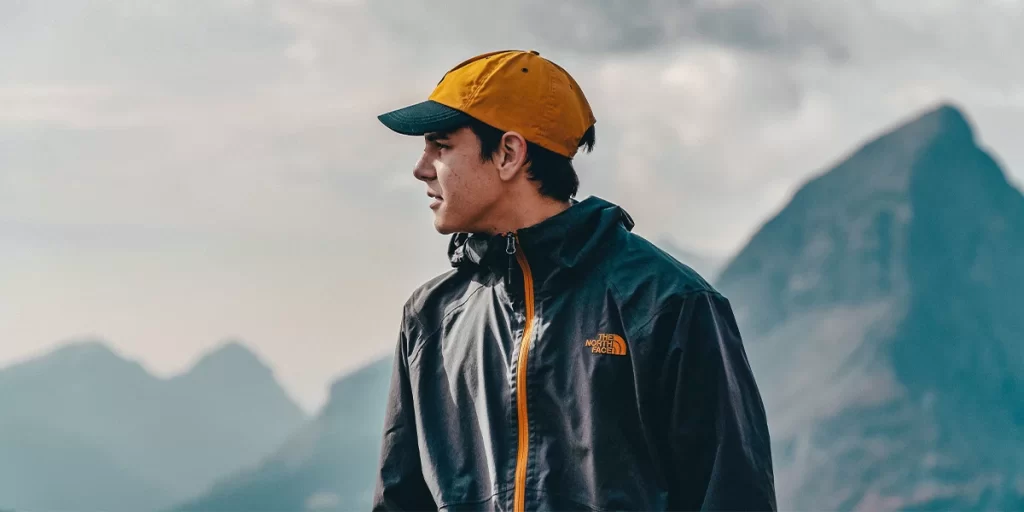

Choosing a hiking jacket is confusing. There are a lot of options – fleece, rain, down and more. The right jacket will keep you warm and dry as you explore outdoors.
This post covers different jacket types. We discuss weather protection, features, and other factors to consider like size and budget. You’ll learn how to choose a hiking jacket that fits your needs.
Interested? Let’s begin.
There are various jackets made for hiking, and the one you choose depends on the weather and hiking conditions. Picking the right jacket might seem confusing, so let’s go through the choices.

Fleece jackets are good options when temps are 35-60°F (2-16°C). The soft synthetic material traps heat to keep you warm even as the mercury drops to freezing. Fleece is breathable and dries quickly if sweaty.
Some features of fleece jackets:
In our TOP 5 guides, we’ve highlighted the lightest fleece jackets for both men and women.

Down jackets have a special filling called down, which comes from duck or goose feathers. These feathers help trap heat, keeping you nice and warm. These jackets work well to keep you cozy in temperatures ranging from about 20°F to 50°F (-6°C to 10°C), and how warm they are depends on how thick they are. Because of the down filling, these jackets are super lightweight and easy to pack or tie around your waist.
Features of down jackets:
In our TOP 5 guides, we’ve highlighted the lightest down jackets for both men and women.

Insulated jackets are like down jackets but use synthetic materials to provide warmth. Commonly worn from around 25°F to 50°F (-4°C to 10°C). Some jackets combine both down and synthetic insulations for maximum warmth. But stand-alone synthetic insulated jackets can be excellent lightweight and breathable cold weather layering options. Benefits of insulated jackets:

Wear rain jackets as outermost layer in wet weather to stay dry. Rain jackets can be worn year-round but excel when skies open up. Waterproof and breathable fabrics like Gore-Tex keep you dry in drizzle to downpour. Especially useful from 50-75°F (10-24°C) to retain comfort. Useful features of rain shell jackets include:
In our TOP 5 guides, we’ve highlighted the lightest rain jackets for both men and women.

Windbreakers are thin jackets specially designed to block wind chill while allowing good ventilation. They are more breathable but less weatherproof than softshell or hardshell jackets.
Features of Windbreakers:
Windbreaker jackets work well for hiking and backpacking in conditions where wind is the primary element you need protection from. Windbreakers tend to be thin, so they fit comfortably over most mid layer insulation.
In our TOP 5 guides, we’ve highlighted the lightest windbreaker jackets for both men and women.

Softshell jackets are stretchy jackets made with breathable fabrics. They resist light rain and wind but allow sweat and moisture to escape. They manage well from around 35°F to 60°F (2-16°C) as everyday and activewear. Benefits of softshell jackets:

Hardshell jackets, closely related to rain jackets but thicker. Usually, these jackets follow a 3-layer design, which includes a waterproof and breathable membrane sandwiched between an inner liner and a sturdy outer face fabric. Choose hardshell jackets when the temperature ranges from 0 to 45°F (-18 to 7°C), depending on the insulation you have underneath. Features of hardshell jackets:

3-in-1 jackets feature an outer shell for weather protection and an inner insulated layer for warmth. You can wear them together or separately, making them convenient for those who prefer not to bother choosing separate layers themselves. Benefits of 3-in-1 jackets:

Choosing the right hiking jacket depends on more than just keeping dry or warm. Here are some important things to think about:

Think about what layers you’ll wear under your jacket. If going light, you may need one thicker jacket. If wearing multiple thinner layers, an uninsulated shell jacket could work. Your base, mid, and outer layers should all work together.
No jacket is 100% waterproof-breathable in extreme weather for extended periods. Focus when buying on matching features and performance to realistic conditions for those big adventures.
Going with a dependable brand that offers replacements when seams fail or zippers jam also gives peace of mind.
No matter what jacket you choose, proper care is key to ensuring it lasts for seasons to come. Be diligent about DWR (durable water repellent) treatments, washing when dirty and checking for tears.
Selecting the perfect hiking jacket involves thinking about a few important factors, such as the weather, how you plan to use it, and its weight. This overview should give you a good starting point to figure out which jacket is right for you.
As you gear up for your next outdoor expedition armed with the knowledge of how to select the perfect hiking jacket, may your travels be filled with comfort, safety, and unforgettable memories.
Yes, a Gore-Tex jacket is an excellent choice for hiking. Gore-Tex is renowned for its waterproof and breathable qualities, making it ideal for outdoor activities like hiking. It effectively keeps you dry during rainy conditions while allowing moisture and sweat to escape, keeping you comfortable and preventing overheating. Additionally, Gore-Tex jackets are often durable and built to withstand rugged outdoor environments, providing reliable protection and lasting performance on your hiking adventures. So, if you’re looking for a reliable and comfortable hiking jacket, a Gore-Tex option is definitely worth considering.
Choosing the right size for your hiking jacket is crucial. Some hikers like a bit more room for layering and freedom of movement, but going too big can be uncomfortable and less useful. Think about what you’ll do and how many layers you’ll wear underneath. Also, check reviews and the manufacturer’s sizing chart to make sure your jacket fits well and works great for your outdoor trips.